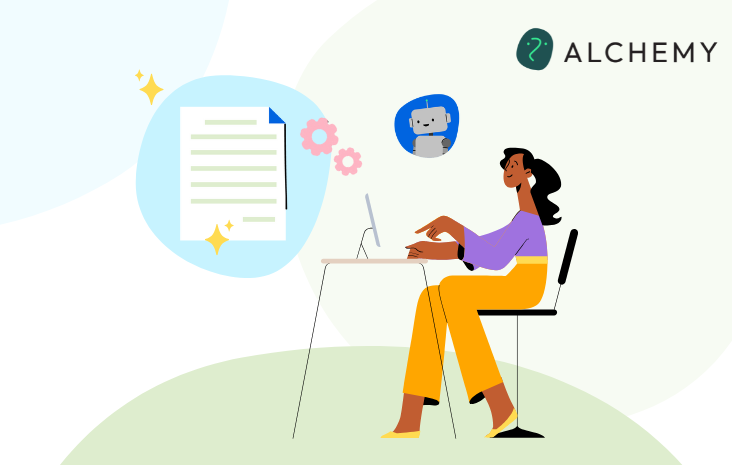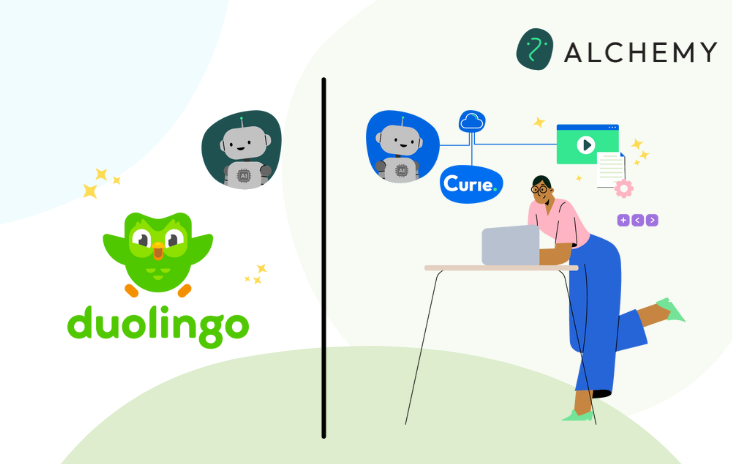Article
Exploring New Frontiers: Level 5 of the AI Assessment Scale

The updated AI Assessment Scale (AIAS) of 2024 by Perkins et al. presents an exciting opportunity for educators and students to explore the creative potential of AI in academic assessments. The scale consists of five levels, each offering a different degree of AI integration, from AI exploration to no authorized AI use at all. In this first post of our five-part series, we’ll explore the highest level—Level 5: AI Exploration. At this level students are encouraged to use AI innovatively to solve complex problems, generate new insights, and co-design novel approaches with their instructors.

What is Level 5: AI Exploration?
Level 5 of the AIAS is the most innovative and creative level, where AI is used not just as a tool but as a partner in exploring new possibilities. Students are encouraged to think outside the box, using AI to enhance problem-solving, generate unique solutions, or co-design assessment tasks with their instructors. This level is particularly suited for advanced and graduate-level courses where the focus is on pushing the boundaries of traditional academic work.
Snapshots of Level 5 in Action
Example 1: Art and Design Portfolio (Visual Arts, 400-level)
- Assignment: Create a portfolio that explores new artistic styles or mediums using AI to generate and refine visual concepts.
- AI Use: AI generates initial concepts, refines designs, and assists in exploring new artistic techniques.
- Constructive Use: AI allows for experimentation with new styles and mediums, enhancing the creative process.
- Managing AI: Students submit a portfolio alongside a process journal that details how AI contributed to each piece and how students pushed the boundaries of traditional art forms through AI collaboration. See full assignment example here.
Example 2: Innovative Business Model (Entrepreneurship, 300-level)
- Assignment: Develop a disruptive business model for an emerging market using AI to analyze trends and predict future opportunities.
- AI Use: AI assists in analyzing market data, generating innovative ideas, and modeling potential business scenarios.
- Constructive Use: AI helps identify untapped markets and innovative strategies, allowing students to refine and enhance their business models.
- Managing AI: Students document their use of AI in exploring various business models, submitting both the final proposal and a reflection on how AI-driven insights shaped their innovative approach. See full assignment example here.
Example 3: Interdisciplinary Project (Graduate-level, Sustainability)
- Assignment: Develop a sustainable solution for a real-world environmental problem, using AI to explore various approaches and strategies.
- AI Use: AI assists in modeling potential solutions, predicting outcomes, and generating creative ideas.
- Constructive Use: AI fosters interdisciplinary innovation, enabling students to explore and refine complex, real-world solutions.
- Managing AI: Students maintain a co-creation log, documenting their interactions with AI, how it influenced their decisions, and the innovative solutions generated through this partnership. A reflective report highlights the collaborative process between the student and AI. See full assignment example here.
Conclusion: Pioneering AI-Enhanced Creativity
Level 5 of the AIAS encourages students to harness AI’s creative potential, pushing the boundaries of what’s possible in academic assessments. This level fosters innovation, critical thinking, and collaboration, preparing students to lead in an AI-driven future.
As we continue our series, we’ll step down to Level 4: Full AI, where AI acts as a comprehensive tool that enhances productivity and innovation while the student remains in control. Stay tuned for more insights into how to best integrate AI into your teaching and assessment practices.
In the meantime, feel free to watch our webinar from August 14, 2024, “Navigating AI and Assessments: Strategies for the New Academic Year” and our growing body of resources on the topic in our “Guide to AI Use in Student Assignments: Practical Strategies & Examples.”



